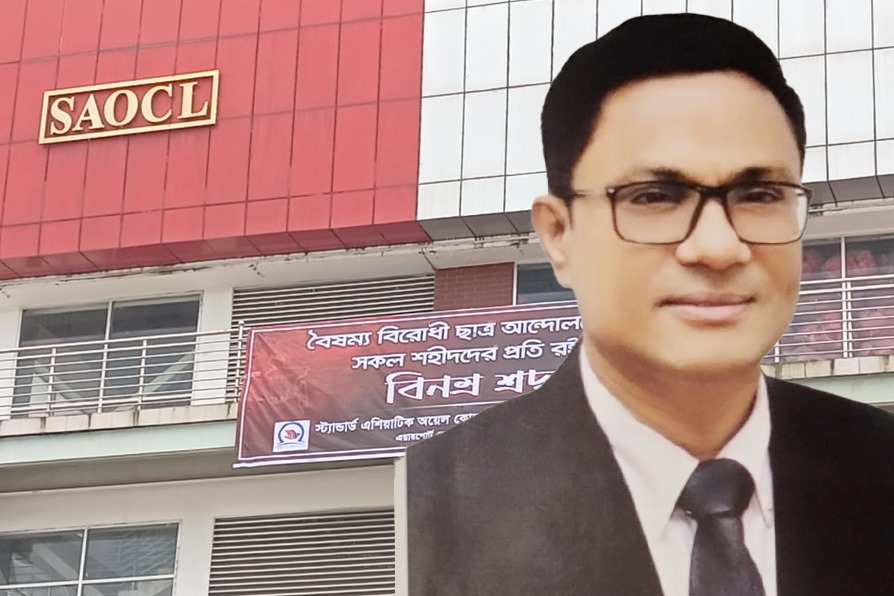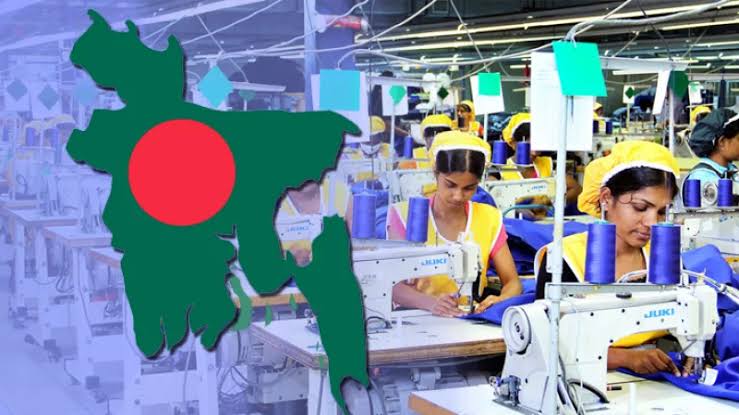
The garment sector is the backbone of Bangladesh’s economy, accounting for over 80% of the country’s total export earnings and employing more than four million people, most of whom are women. The industry’s importance extends beyond economics; it plays a crucial role in social development, poverty reduction, and women’s empowerment in the country. However, the COVID-19 pandemic, followed by global economic challenges and political unrest, has put unprecedented pressure on this vital sector. The crisis has led to factory closures, layoffs, and a sharp decline in orders from international buyers. As the global economy begins to recover, the reopening of garment factories has emerged as a critical issue for Bangladesh, with significant implications for its economy, workforce, and international trade relations.
The Importance of the Garment Sector in Bangladesh
The ready-made garment (RMG) industry in Bangladesh has been the cornerstone of the nation’s economic development for decades. The sector has provided millions of jobs, especially for women from rural areas, contributing to a significant reduction in poverty and improvement in social indicators. The industry has also been a key driver of Bangladesh’s export-led growth, with major markets in the United States, European Union, and other developed economies.
However, the sector’s success has also made it vulnerable to global economic shifts. The reliance on a few key markets and the low-cost production model have exposed the industry to significant risks during global downturns. The COVID-19 pandemic exacerbated these vulnerabilities, leading to a severe crisis in the industry.
**Impact of the COVID-19 Pandemic**
The pandemic had a devastating impact on the global garment industry, and Bangladesh was no exception. As lockdowns and restrictions were implemented worldwide, demand for clothing plummeted. Major brands and retailers in the West canceled or suspended orders, leading to a sudden and severe drop in revenue for Bangladeshi garment factories. According to the Bangladesh Garment Manufacturers and Exporters Association (BGMEA), by mid-2020, over $3 billion worth of orders had been canceled or suspended.
The immediate effect was the closure of many garment factories, leading to widespread job losses and wage cuts. The International Labour Organization (ILO) estimated that nearly one million workers in Bangladesh’s garment sector were temporarily or permanently laid off during the peak of the pandemic. For a country where the garment sector is a major source of employment, this had profound social and economic consequences.
**Challenges in Reopening Garment Factories**
As the global economy begins to recover, the reopening of garment factories in Bangladesh is crucial. However, this process is fraught with challenges:
1. **Uncertainty in Global Demand**: Although the demand for garments is gradually recovering, it remains volatile. Changes in consumer behavior, ongoing supply chain disruptions, and the shift towards online shopping have altered the dynamics of the industry. Factories reopening in Bangladesh face the challenge of adapting to these new market conditions while ensuring a steady flow of orders.
2. **Health and Safety Concerns**: The health and safety of workers remain a paramount concern. The pandemic has highlighted the need for better working conditions and healthcare provisions in the garment sector. Reopening factories without adequate health and safety measures could lead to outbreaks of COVID-19 or other health issues, further disrupting operations.
3. **Financial Strain on Factories**: Many garment factories in Bangladesh operate on thin margins, and the pandemic has exacerbated financial strains. With reduced revenues and increased costs for health and safety measures, many factories are struggling to reopen. Access to finance is a major hurdle, as many small and medium-sized enterprises (SMEs) in the sector have limited access to credit.
4. **Worker Welfare and Labor Rights**: The pandemic has underscored the precarious nature of employment in the garment sector. Many workers were laid off without severance pay or other benefits, leading to widespread financial distress. The reopening of factories must address these labor issues, ensuring that workers are treated fairly and that their rights are protected.
5. **Supply Chain Disruptions**: The global supply chain disruptions caused by the pandemic continue to affect the garment industry. Delays in the delivery of raw materials, increased shipping costs, and logistical challenges are some of the issues that factories in Bangladesh must navigate as they attempt to resume full operations.
6. **Political Unrest**: Political instability and unrest in Bangladesh can exacerbate the challenges faced by the garment sector. Protests, strikes, and political conflicts can disrupt factory operations, affect worker productivity, and create an unstable business environment. The sector’s recovery depends on a stable political climate that fosters investment and growth.
**Government and Industry Response**
The government of Bangladesh, in collaboration with industry stakeholders, has taken several measures to support the reopening of garment factories and mitigate the impact of the crisis:
1. **Financial Support Packages**: The government has announced financial support packages to help garment factories weather the crisis. These include low-interest loans, subsidies for worker wages, and tax relief measures. The central bank has also taken steps to ease liquidity constraints for businesses in the sector.
2. **Health and Safety Protocols**: The government, in coordination with the BGMEA, has developed and implemented health and safety protocols for garment factories. These include guidelines for social distancing, sanitation, and personal protective equipment (PPE) usage. Compliance with these protocols is mandatory for factories that wish to reopen.
3. **Worker Protection Initiatives**: Efforts have been made to enhance worker protection and labor rights in the sector. The government has strengthened labor inspections and enforcement of labor laws to ensure that workers are not exploited during the reopening process. There have also been initiatives to provide social protection and financial assistance to workers who were laid off during the pandemic.
4. **Promoting Diversification and Innovation**: The crisis has highlighted the need for the Bangladeshi garment industry to diversify its product offerings and markets. The government and industry associations are promoting innovation and diversification in the sector, encouraging factories to produce higher-value garments and explore new markets beyond the traditional ones in Europe and North America.
**International Support and Collaboration**
The international community has played a crucial role in supporting Bangladesh’s garment sector during the crisis. International organizations, development agencies, and donor countries have provided financial assistance, technical support, and policy advice to help the sector recover. Key areas of international support include:
1. **Funding and Aid**: International financial institutions such as the World Bank, the Asian Development Bank (ADB), and the International Monetary Fund (IMF) have provided funding to support Bangladesh’s economic recovery, including the garment sector. Bilateral aid from donor countries has also been directed towards supporting workers and SMEs in the industry.
2. **Technical Assistance**: International organizations like the ILO and the United Nations Development Programme (UNDP) have provided technical assistance to the Bangladeshi government and industry stakeholders. This assistance has focused on improving health and safety standards, enhancing labor rights, and promoting sustainable practices in the garment sector.
3. **Trade Preferences and Market Access**: The European Union and other major trading partners have maintained trade preferences for Bangladeshi garments, helping the sector regain its footing in international markets. The continuation of the EU’s Everything But Arms (EBA) initiative, which provides duty-free and quota-free access for Bangladeshi goods, has been particularly important in this regard.
4. **Buyer Collaboration**: Global brands and retailers have a significant role to play in the recovery of Bangladesh’s garment sector. Some brands have committed to honoring contracts and orders, even if delayed, to support their suppliers in Bangladesh. There have also been efforts to promote fair trade practices and ensure that workers in the supply chain are treated fairly.
**Long-Term Implications for the Garment Sector**
The reopening of garment factories in Bangladesh is not just about returning to business as usual; it presents an opportunity to address the structural weaknesses in the sector and build a more resilient and sustainable industry. Several long-term implications and opportunities arise from the crisis:
1. **Strengthening Worker Rights and Social Protection**: The pandemic has exposed the vulnerabilities of workers in the garment sector. Going forward, there is a need to strengthen labor rights and social protection for workers, including the implementation of minimum wage laws, improved working conditions, and access to healthcare and social security.
2. **Diversification and Value Addition**: The crisis has highlighted the risks of over-reliance on a few key markets and low-cost production models. The Bangladeshi garment industry must diversify its product offerings, move up the value chain, and explore new markets. This could involve producing higher-end garments, investing in sustainable and ethical production practices, and leveraging technology and innovation.
3. **Sustainability and Green Manufacturing**: The global shift towards sustainability presents an opportunity for Bangladesh to position itself as a leader in green manufacturing in the garment sector. Investing in sustainable production practices, reducing the environmental footprint of the industry, and adopting circular economy principles could enhance the competitiveness of Bangladeshi garments in global markets.
4. **Strengthening Supply Chain Resilience**: The pandemic has underscored the importance of supply chain resilience. The Bangladeshi garment industry must strengthen its supply chains by diversifying suppliers, improving logistics, and investing in digital technologies that enhance supply chain visibility and efficiency.
5. **Political Stability and Business Environment**: For the garment sector to fully recover and thrive, political stability is crucial. The government must work towards creating a stable business environment that encourages investment and ensures the smooth operation of factories. Addressing political unrest and ensuring that labor disputes are resolved in a fair and timely manner will be key to the sector’s long-term success.
The garment sector is at a critical juncture, facing both significant challenges and opportunities as factories reopen amidst ongoing global economic uncertainty and political unrest. The sector’s recovery will depend on the collective efforts of the government, industry stakeholders, international partners, and global buyers to address the immediate challenges and build a more resilient, diversified,

 A.B.M. Abir
A.B.M. Abir 























